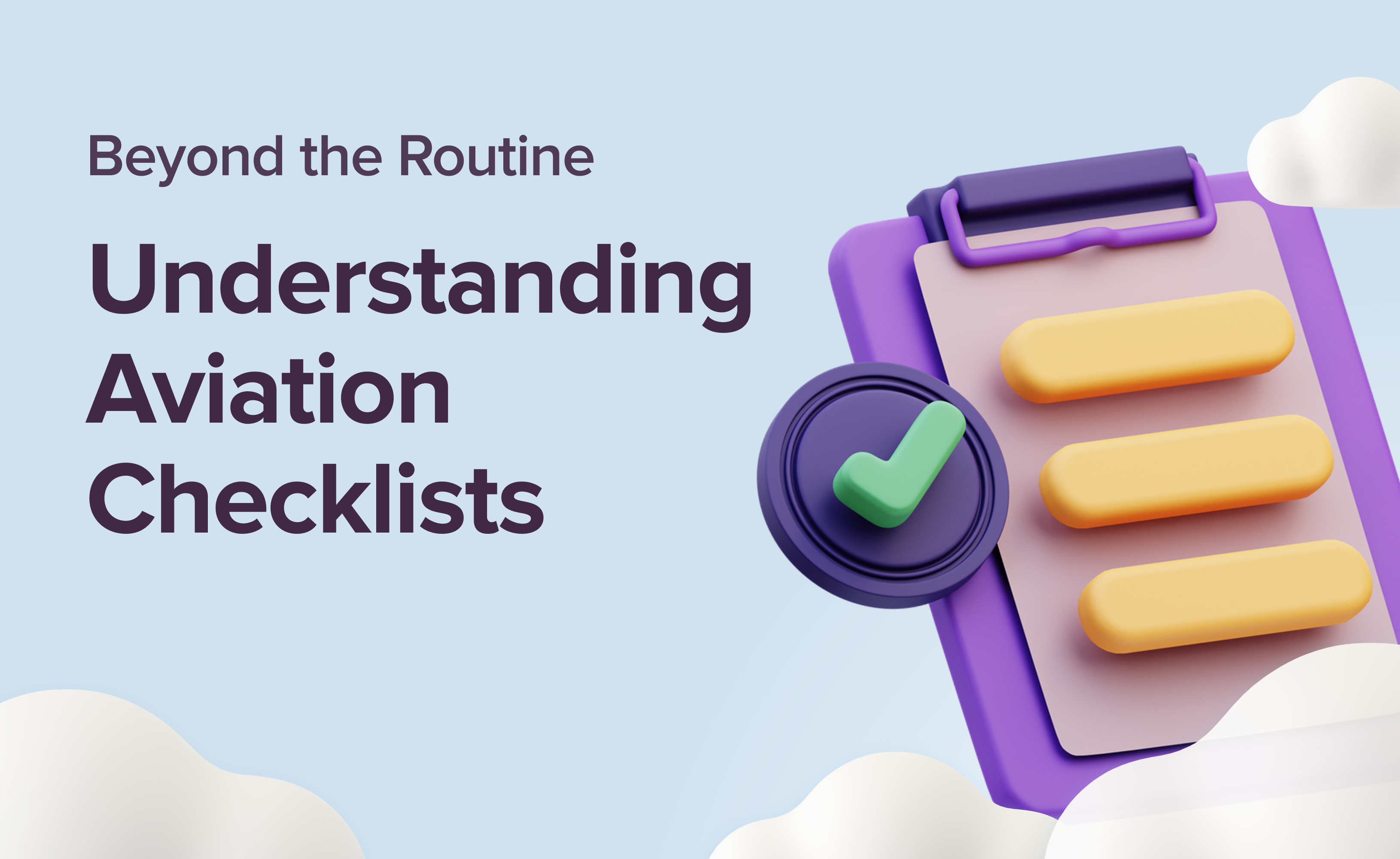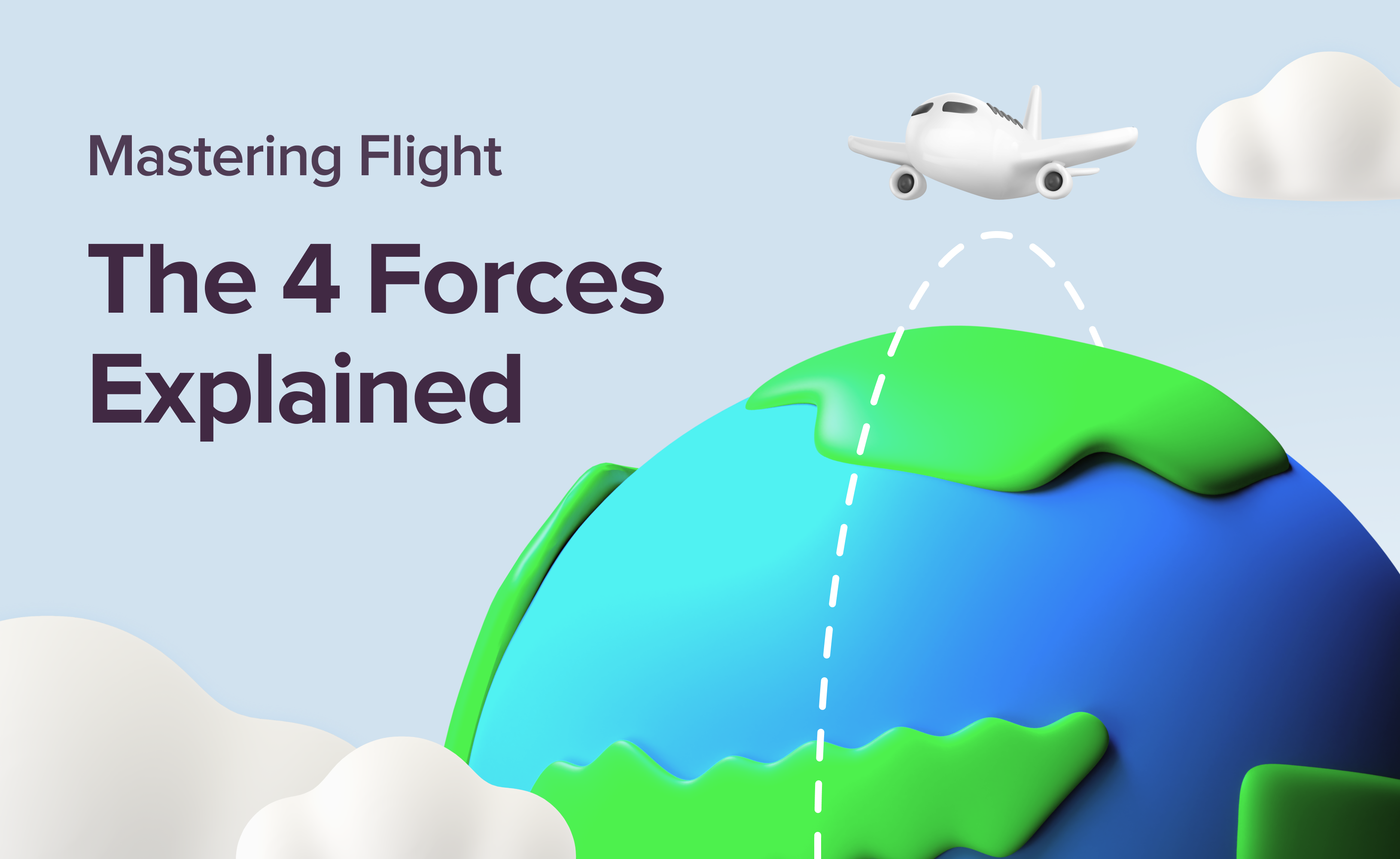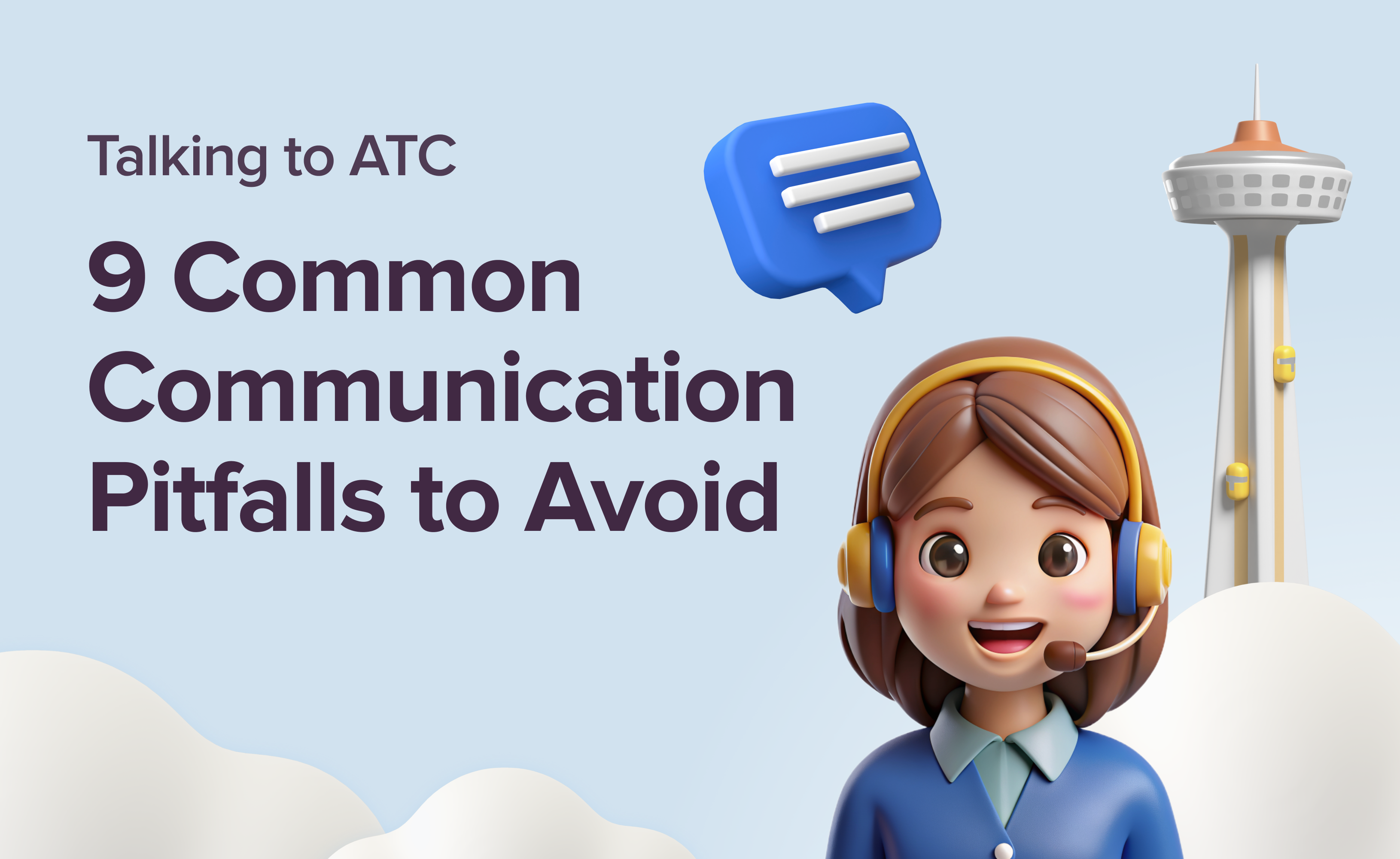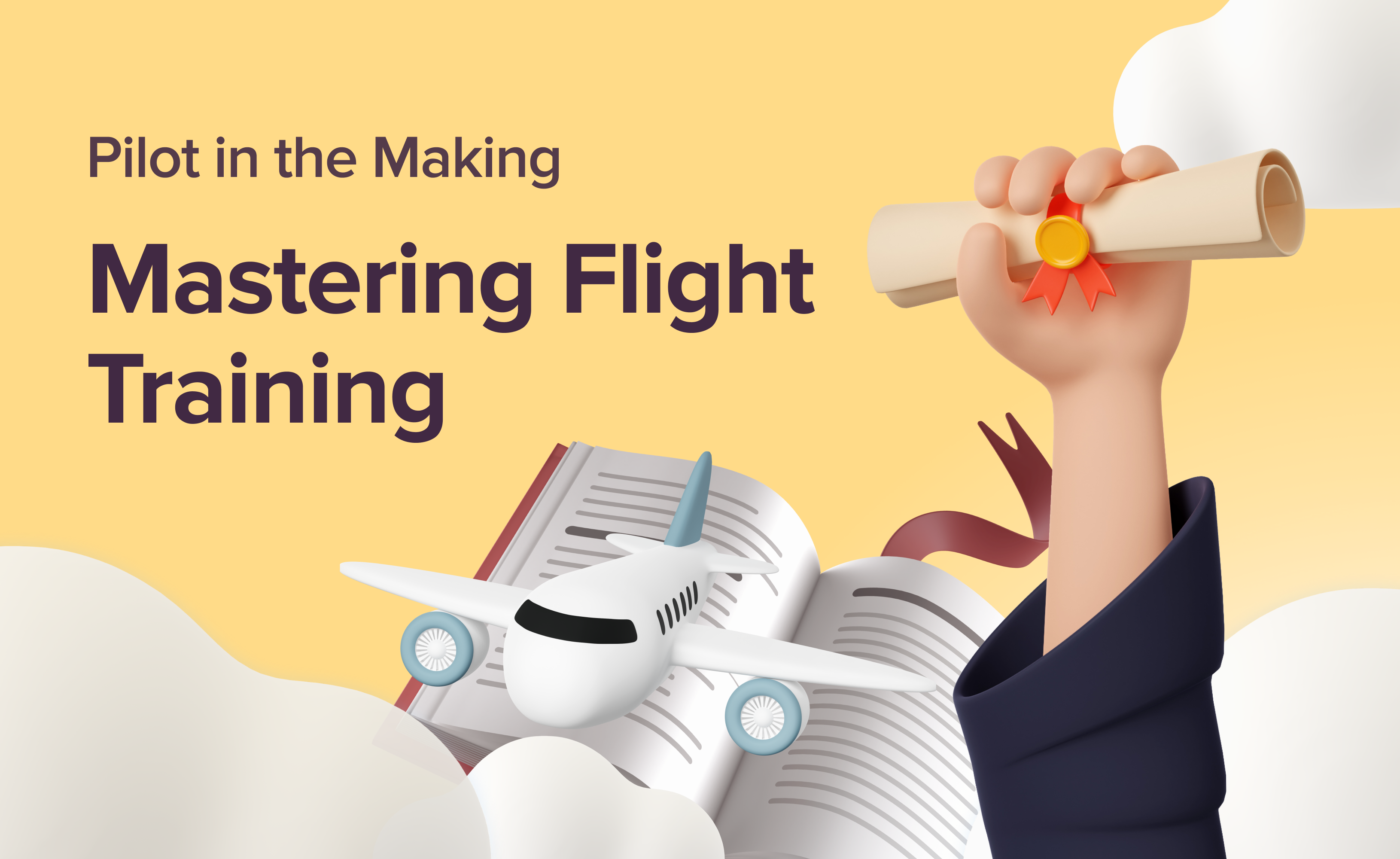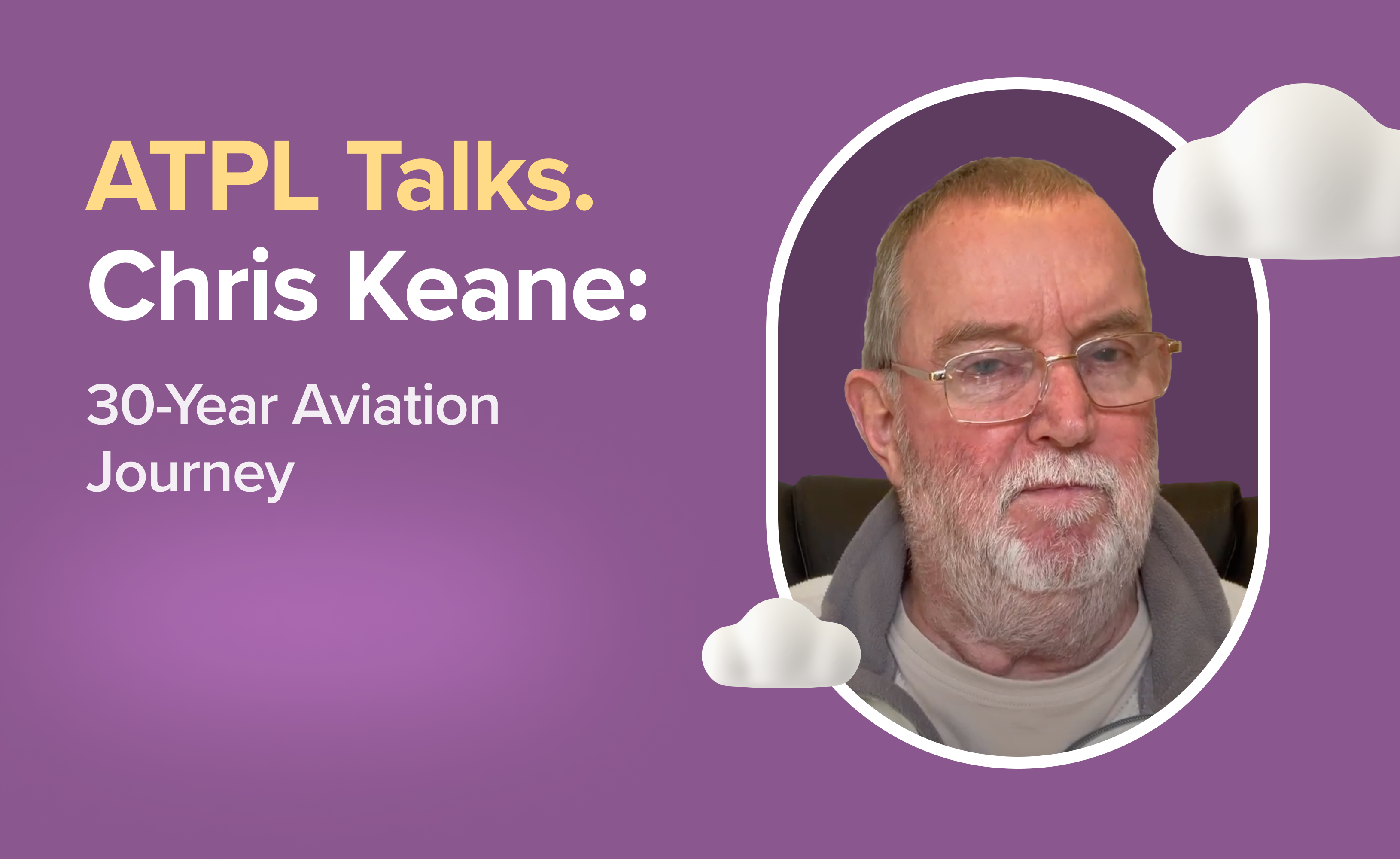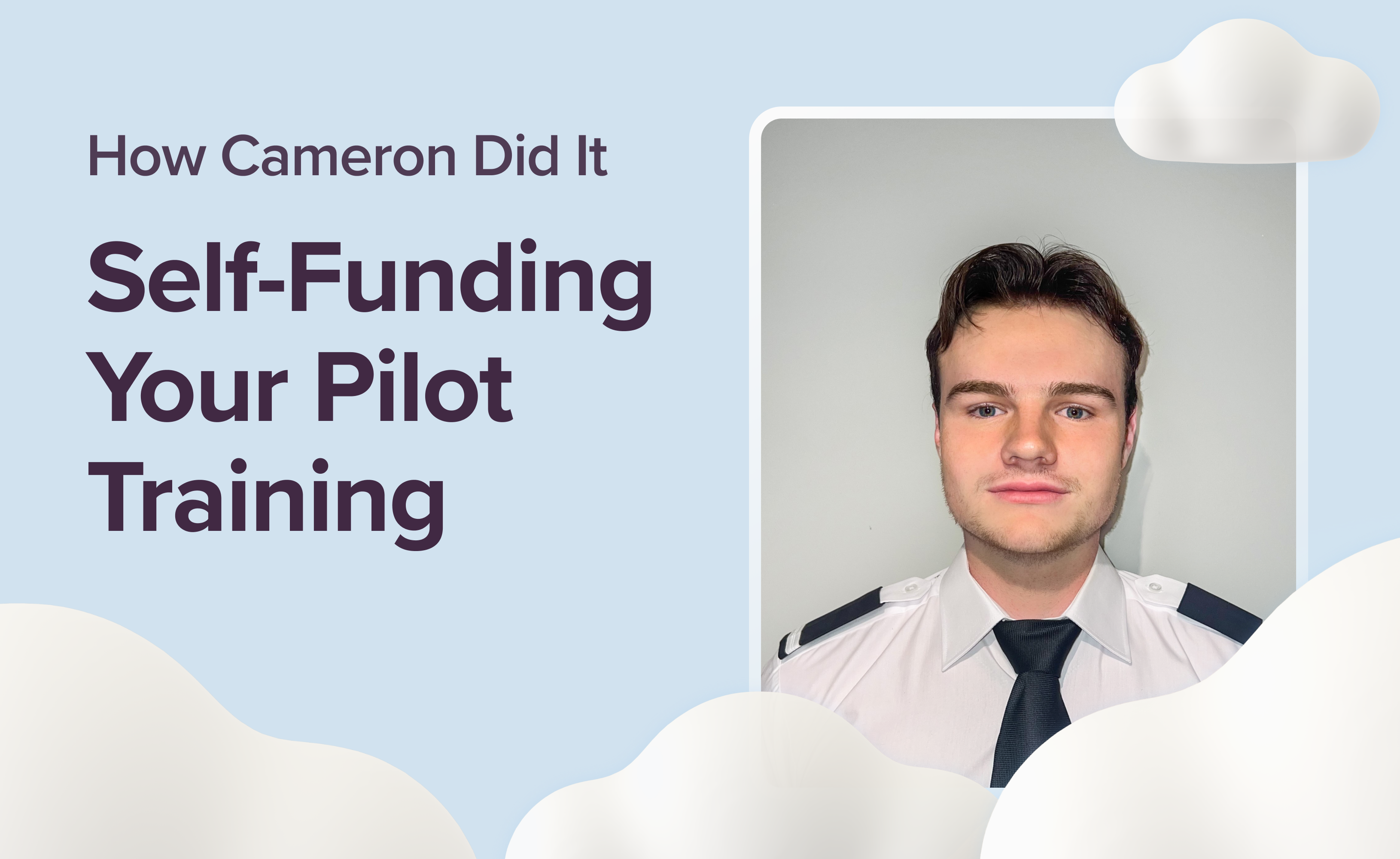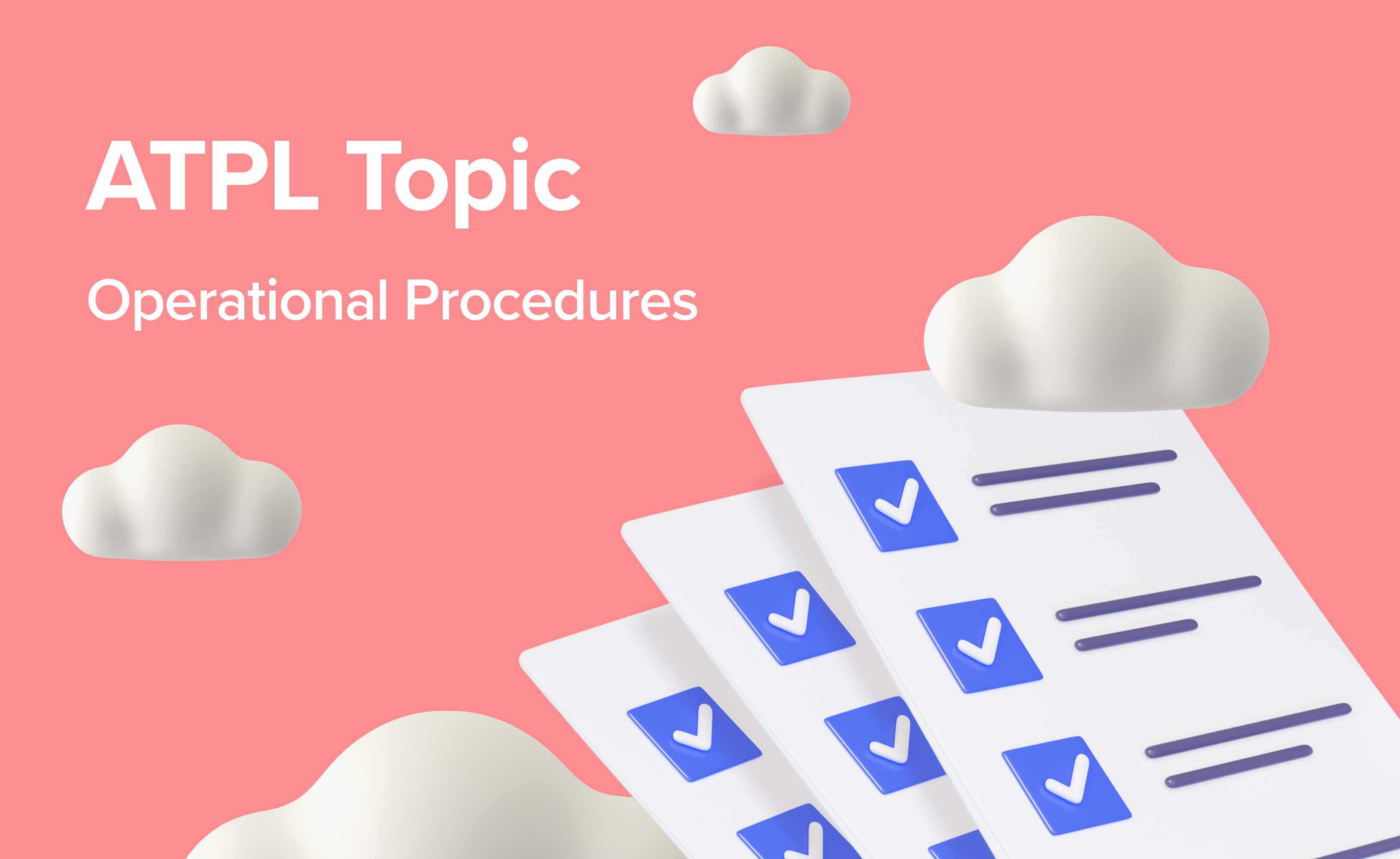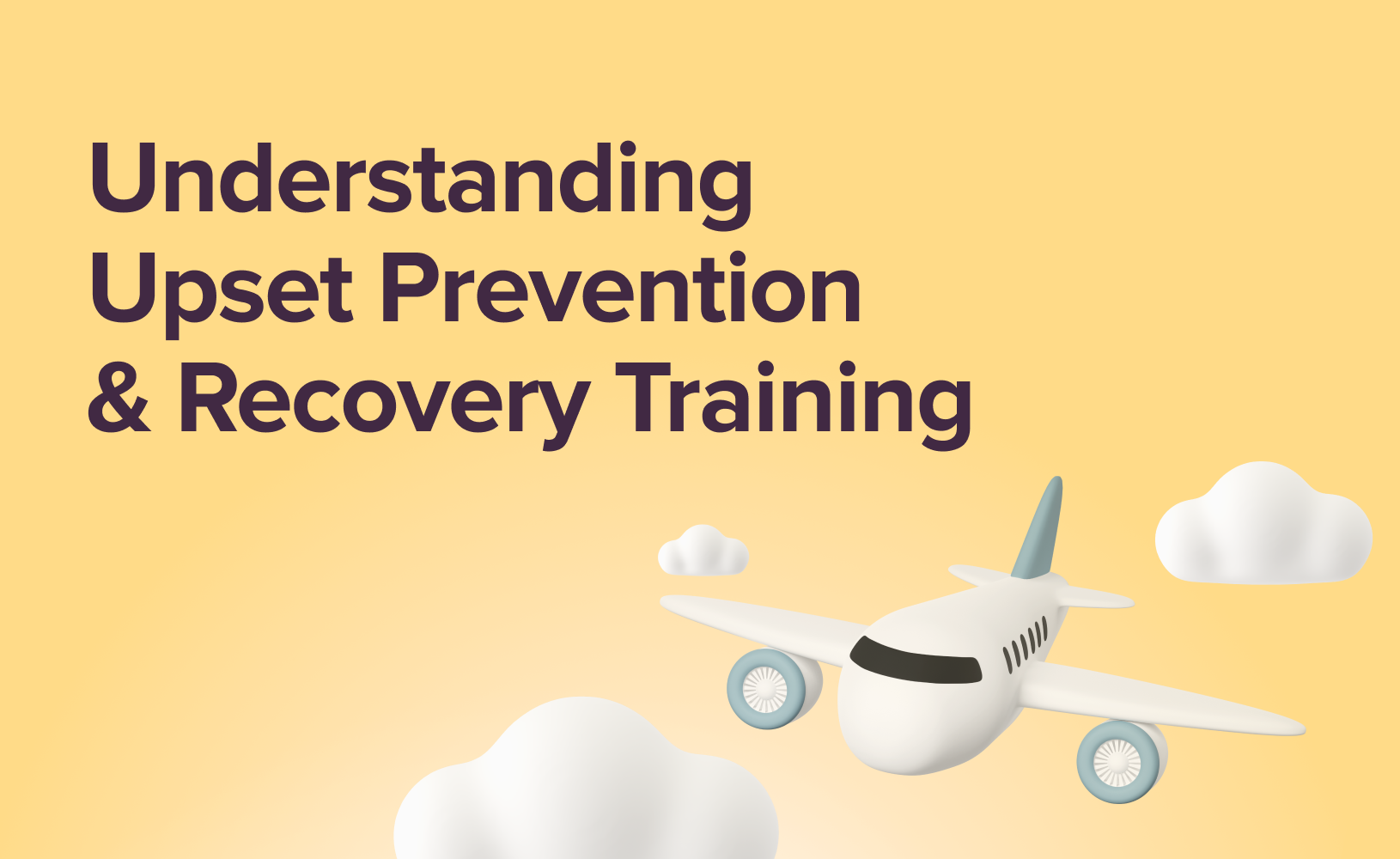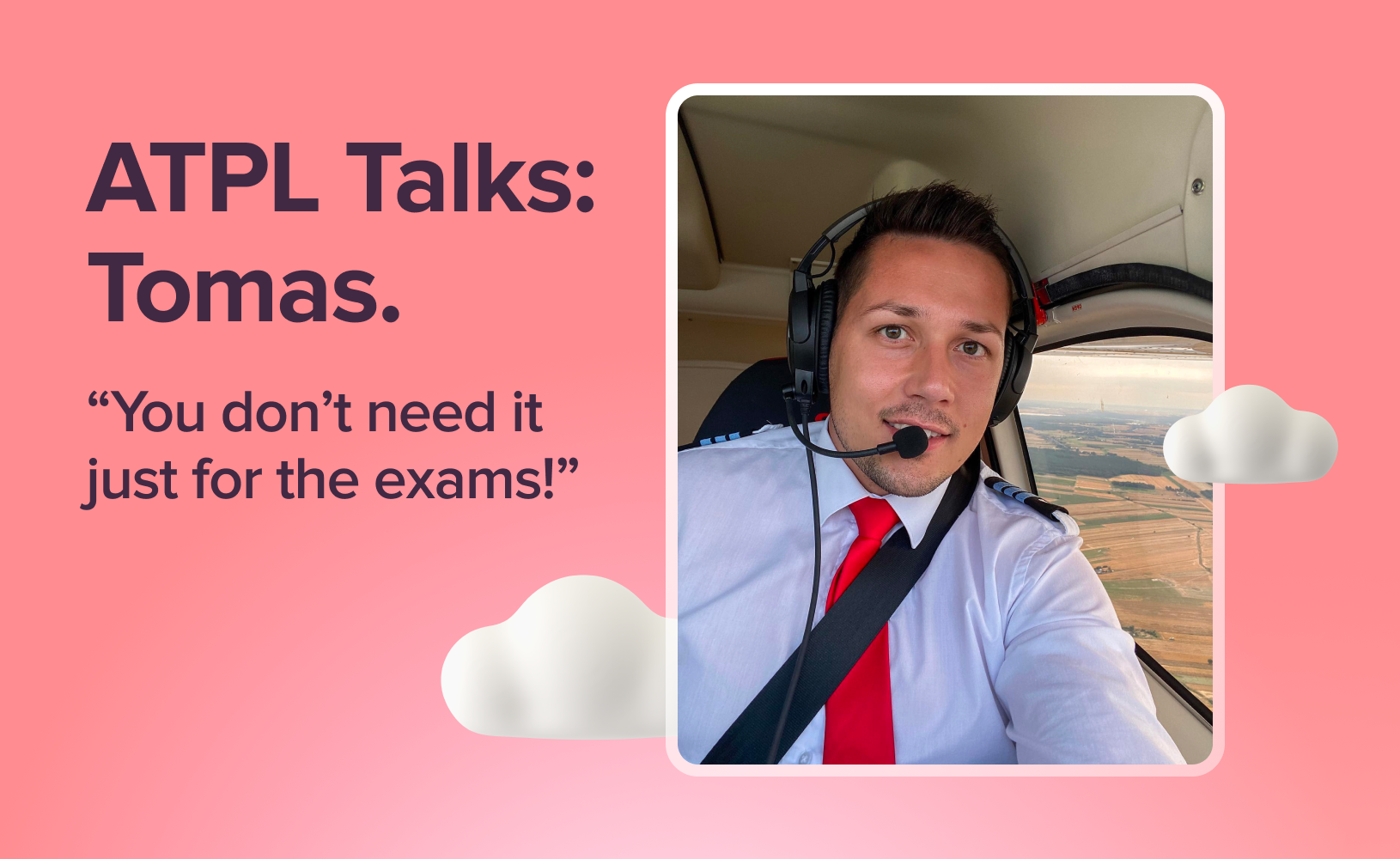Cockpit Connection: The Role of CRM in ATPL Training
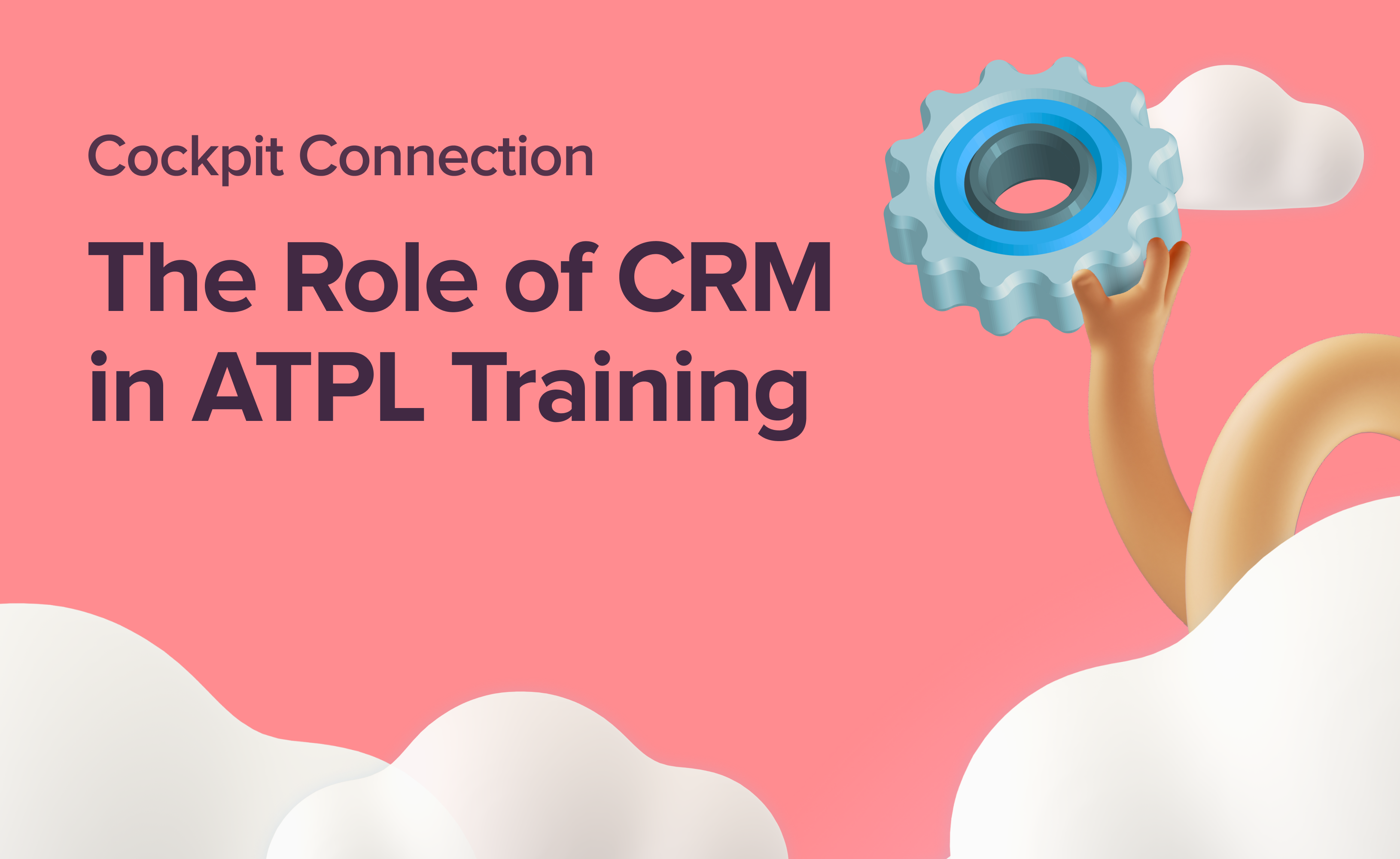
Crew Resource Management (CRM) is more than just a behaviour theory — it’s a game-changer in aviation safety and teamwork. Did you know that CRM was first introduced in the late 1970s after studies revealed that most aviation accidents were caused by human error, rather than mechanical failures? This discovery led to the development of CRM concept.
Simply put, Crew Resource Management or Cockpit Resource Management is the effective use of all resources ICAO defines CRM as the effective use of all available resources – human, technological, and informational – to ensure safe and efficient flight operations.
Understanding CRM isn't just another theory topic for those of you preparing for the ATPL exams; it’s a crucial skill set that will shape your effectiveness as a pilot. CRM is about enhancing communication, decision-making, and teamwork in the cockpit — skills rigorously tested during your ATPL exams.
In this post, we’ll dive into the essentials of CRM, why it’s so important, and how mastering it can set you up for success in both your exams and your future aviation career. So, if you’re aiming to excel not just in your tests but also in the skies, keep reading to see how CRM can make all the difference.
The History and Development of CRM

Aviation is undoubtedly one of the applied fields to which psychological science has contributed most. The analysis and study of human factors are currently among the strong points in the aeronautical sector in reducing aviation accidents. Since their appearance in 1979, crew resource management (CRM) programs have been one of the most successful tools for dealing with what is known as “human error”.
United Airlines became a pioneer by incorporating CRM into their training curriculum in 1981. This move was driven by a series of high-profile accidents that highlighted the catastrophic consequences of poor communication and decision-making in the cockpit. The most notable of these was the 1977 Tenerife airport disaster, the deadliest aviation accident in history. Two passenger jets collided on the runway, resulting in 583 fatalities. Investigators identified miscommunication between the flight crews and air traffic control (ATC) as the primary cause of the disaster, underlining the critical need for better crew coordination and clear communication.
Just a year later, in 1978, United Airlines Flight 173 faced a landing gear malfunction while approaching Portland International Airport. The captain became so focused on troubleshooting the issue that he neglected the aircraft's rapidly diminishing fuel supply. This lapse in situational awareness and communication led to the plane crashing into a residential area, killing ten people. The investigation revealed that poor communication under stress, a lack of situational awareness, ineffective teamwork, and inadequate decision-making all played a role in the tragedy.
These incidents were a wake-up call for the aviation industry, underscoring the importance of standardising radio communication and thoroughly revising cockpit procedures. According to the International Civil Aviation Organization (ICAO), human error accounts for 60% to 80% of all airline incidents and accidents. The main issues identified were poor group decision-making, ineffective communication, weak leadership, and inadequate task and resource management. In response, CRM was introduced as a mandatory element of airline pilot training, aiming to address these weaknesses and prevent similar accidents in the future.

The Value of CRM in Aviation
Crew Resource Management is a relatively recent yet transformative addition to aviation training, marking a shift to emphasising non-technical skills. While the roots of CRM weren’t entirely absent in early aviation, its principles were not systematically integrated into pilot training until the industry recognised a critical need for improvement — unfortunately, in the wake of tragic accidents.
Before the widespread adoption of CRM, pilots were often trained to be authoritative figures, making decisions in isolation without fully engaging their co-pilots or flight crew members. This hierarchical structure sometimes led to critical oversights and missed opportunities to correct mistakes before they escalated into disasters.
CRM changes this dynamic by encouraging a more collaborative approach. It empowers all crew members to speak up if they notice something amiss, ensuring that potential issues are addressed early. CRM ensures that every voice in the cockpit is heard and that every decision is made with the collective expertise of the crew.
According to data from the International Civil Aviation Organization (ICAO), the implementation of CRM training has contributed to a significant reduction in the number of accidents caused by human error. Studies have shown that accidents attributed to crew error have decreased by nearly 50% since CRM became a standard part of pilot training. Additionally, the Federal Aviation Administration (FAA) reports that CRM has been instrumental in reducing the overall accident rate in commercial aviation, making it one of the most effective safety initiatives in the industry.
The statistics and real-world examples speak for themselves: CRM saves lives and continues to be a critical component of aviation safety.

Core Principles of Crew Resource Management
CRM is grounded in basic principles that guide pilots and crew members to work together effectively, ensuring safe flight operations. These principles aren't just theoretical — they’re practical strategies that you’ll apply both in everyday flying and during your ATPL exams.
CRM covers a broad spectrum of pilot competencies, including such soft skills as communication, situational awareness, problem-solving, decision-making, and teamwork. Each of these areas is critical to flight safety, and they involve various sub-disciplines that have been recognised since the early days of aviation. Traditionally, these concepts were referred to by general terms like 'Airmanship,' 'Captaincy,' and 'Crew Cooperation.'
Let’s explore these core principles of CRM and see how they shape the pilot competencies.
1. Effective Communication
At the heart of CRM is the principle of effective communication. This involves clear, concise, and open dialogue between all crew members, ensuring that everyone is on the same page. In everyday flying, this means maintaining continuous communication with your co-pilot, cabin crew, and air traffic control (ATC). For example, when approaching a landing, precise communication ensures that everyone knows their roles and responsibilities, reducing the risk of errors.
In CRM, you’ll learn:
Cultural Influence: Understanding how cultural backgrounds can impact communication styles.
Overcoming Barriers: Navigating challenges like rank, age, or crew position that can hinder open communication.
Polite Assertiveness: The ability to speak up confidently yet respectfully when something is wrong.
Active Participation and Listening: Ensuring every crew member is engaged and heard.
Providing and Receiving Feedback: Constructive feedback is crucial for continuous improvement.
Legitimate Avenues of Dissent: Creating a safe environment where concerns can be raised without fear of repercussion.
During the ATPL course exams, your ability to communicate effectively will be closely evaluated. CRM trainers will look for how well you relay information, respond to ATC, and coordinate with your co-pilot under pressure. Clear communication is crucial for passing these assessments.

2. Situational Awareness
Situational awareness refers to your ability to understand and interpret what’s happening both inside and outside the aircraft. This principle is vital for anticipating potential issues and making informed decisions. In actual flying, this skill lets you stay one step ahead, making informed decisions that enhance safety and efficiency.
CRM focuses on:
Total Awareness: Maintaining a clear understanding of what’s happening inside and outside the aircraft.
Reality vs. Perception: Valuing that what you perceive might not always reflect the actual situation.
Avoiding Fixation: Staying vigilant to avoid getting distracted by one issue at the expense of overall awareness.
Constant Monitoring: Regularly checking instruments, the environment, and the crew to stay informed.
Incapacitation Awareness: Recognising when a crew member might be physically or mentally impaired, and taking appropriate action.
You’ll be tested on your situational awareness through scenarios that require you to manage multiple tasks simultaneously. Examiners will assess your ability to maintain a clear picture of the flight situation, anticipate potential problems, and take appropriate actions.
3. Decision-making and Problem-solving
Decision Making and Problem-solving are central to your role as a pilot and heavily assessed in ATPL exams, especially in scenarios where you must respond to emergencies or unexpected events. It involves evaluating available information, considering possible outcomes, and choosing the best course of action. In the cockpit, this means making timely decisions that prioritise safety, whether it’s adjusting your flight path due to weather conditions or responding to an emergency. You’ll need to demonstrate your ability to make sound, logical decisions under pressure, showing that you can balance competing priorities while keeping the safety of the flight at the forefront.

4. Leadership and Followership
Good leadership is about more than giving orders — it’s about fostering a collaborative environment where every team member contributes. In the cockpit, leadership and followership go hand in hand. Effective crew coordination relies on every team member understanding their role and contributing to the overall mission.
At the same time, followership involves knowing when to step back and support your fellow crew members, contributing to a cohesive team effort. In flight operations, these skills ensure that the cockpit functions smoothly, with each member playing their part in ensuring a successful outcome.
During ATPL exams, you may be assessed on your ability to lead a crew or support your captain effectively. Strong leadership skills ensure that you can guide your team confidently, delegate tasks efficiently, and maintain control in high-pressure situations.
Team-Building: Creating a cohesive team where everyone works towards the same goal.
Managerial Skills: Planning, organising, directing, and controlling tasks to ensure smooth operations.
Authority and Assertiveness: Balancing the need to assert authority with the need to encourage input from the team.
Professionalism and Credibility: Building trust and respect among crew members through consistent, competent leadership.
Workload Management: Ensuring that tasks are distributed efficiently to avoid overburdening anyone crew member.

5. Stress Management
Aviation is inherently stressful, and how you manage that stress is crucial to your performance. During the ATPL course, you’ll be placed in high-pressure scenarios designed to test your ability to remain calm and focused. By mastering stress management techniques, you’ll be able to maintain clarity of thought and avoid the negative effects of stress on your decision-making and communication. In real-world flying, effective stress management ensures that you can handle the demands of the job without becoming overwhelmed, contributing to safer and more efficient operations.
Fitness to Fly: Recognising and maintaining your mental and physical readiness for flight.
Coping with Fatigue: Understanding how fatigue affects performance and taking steps to mitigate it.
Recognising Incapacitation: Being able to identify when stress or other factors are impairing your or a colleague’s ability to function and taking the necessary steps to address it.
6. Error Management
CRM recognises that human error is inevitable, but it also teaches strategies for managing and mitigating these errors. This principle involves recognising potential mistakes before they escalate into serious issues and taking corrective action swiftly. In everyday flying, this might mean double-checking checklists, verifying communications, and staying vigilant to avoid common pitfalls.
Pre-Mission Analysis: Planning ahead to anticipate potential challenges.
Ongoing Review: Continuously assessing decisions and actions during flight.
Post-Mission Debriefing: Reflecting on what went well and what could be improved after each flight.
In ATPL exams, your ability to manage errors will be closely looked at. They will assess how you respond to mistakes, whether you can quickly identify and correct them, and how you learn from these experiences to prevent future errors.

CRM Training Procedures
In the ATPL syllabus, the Human Performance and Limitations exam, particularly the 040-03 Basic Aviation Psychology section, is closely linked to Crew Resource Management (CRM). This part of your training delves into the mental and psychological aspects of flying, examining how these factors influence a pilot’s decision-making, situational awareness, and overall performance.
CRM is specifically designed to enhance your ability to work effectively as part of a cockpit team. It focuses on developing key skills that are essential for safe and efficient flight operations, such as communication, teamwork, and problem-solving. Understanding the human factors covered in the Human Performance and Limitations exam directly supports the CRM concepts you'll apply in real-world flying, ensuring that you are well-prepared to handle the complexities of aviation with confidence.
The ICAO’s Advisory Circular on Crew Resource Management (CRM) training highlights next topics:
Human Error and Prevention: Understanding error chains, prevention, and detection.
Company Safety Culture: Emphasising the role of Standard Operating Procedures (SOPs) and organisational factors.
Stress Management: Managing stress, fatigue, and maintaining vigilance.
Situational Awareness: Acquiring and processing information, and managing workload.
Decision-Making: Enhancing effective decision-making skills.
Communication and Coordination: Improving communication both inside and outside the cockpit.
Leadership and Teamwork: Focusing on leadership, team behaviour, and performance.
Checklist and Briefing: Ensuring proper use of checklists and effective briefings.
Here’s what you can expect during your CRM training:
Awareness Phase
The first phase of CRM training is all about building awareness. You’ll start with instructional presentations that focus on how interpersonal and group dynamics affect crew coordination. This phase is crucial because it provides you with a common language and conceptual framework to understand CRM principles. Expect to dive into:
Case Studies: Detailed analyses of past aviation accidents and incidents to understand how poor crew coordination contributed to them.
Computer-Based Learning and Videos: These tools help illustrate good and bad examples of teamwork and communication in the cockpit, allowing you to visualise CRM concepts in action.
Practice and Feedback Phase
In this phase, you’ll move from theory to practice. This phase is all about honing your skills through practical application and receiving constructive feedback. Here’s what you’ll engage in:
Role-Playing and Group Exercises: You’ll participate in scenarios that simulate real-life situations, allowing you to practice decision-making, communication, and problem-solving in a controlled environment.
Line-Oriented Flight Training (LOFT): LOFT is a key component of CRM training, often conducted in flight simulators. These exercises are designed to mimic real-world flying conditions, requiring the entire crew to work together to resolve complex issues. Simulators provide a realistic environment where you can apply CRM principles in high-pressure situations.
Video Feedback: After participating in these exercises, you’ll watch video recordings of your performance. This third-person perspective is invaluable — it allows you to critique your own behaviour and recognise areas for improvement.
Reinforcement Phase
CRM training doesn’t stop after your initial sessions. The reinforcement phase ensures that CRM skills are not only learned but ingrained into your operational experience, making them a natural part of how you fly.
It’s important that CRM training involves the entire crew, not just pilots. This means you’ll regularly train alongside other crew members, such as co-pilots and cabin crew, to simulate the dynamics of a real flight situation.

Airhead's Takeaway
CRM is constantly evolving, becoming more comprehensive and sophisticated, as it integrates advancements from a rapidly progressing industry and insights from fields like psychology. Crew Resource Management (CRM) is not a silver bullet that will eliminate all errors, but CRM remains the most powerful tool available to air operators for addressing human factors in training.
By embracing CRM in your training, you're not just learning how to fly — you're becoming part of a broader, dynamic effort to make the skies safer for everyone. So, as you progress through your ATPL exams and beyond, remember that mastering CRM principles is key to your growth as a pilot and your contribution to the future of aviation safety. Stay committed, stay curious, and keep pushing the boundaries of what you can achieve with CRM.

